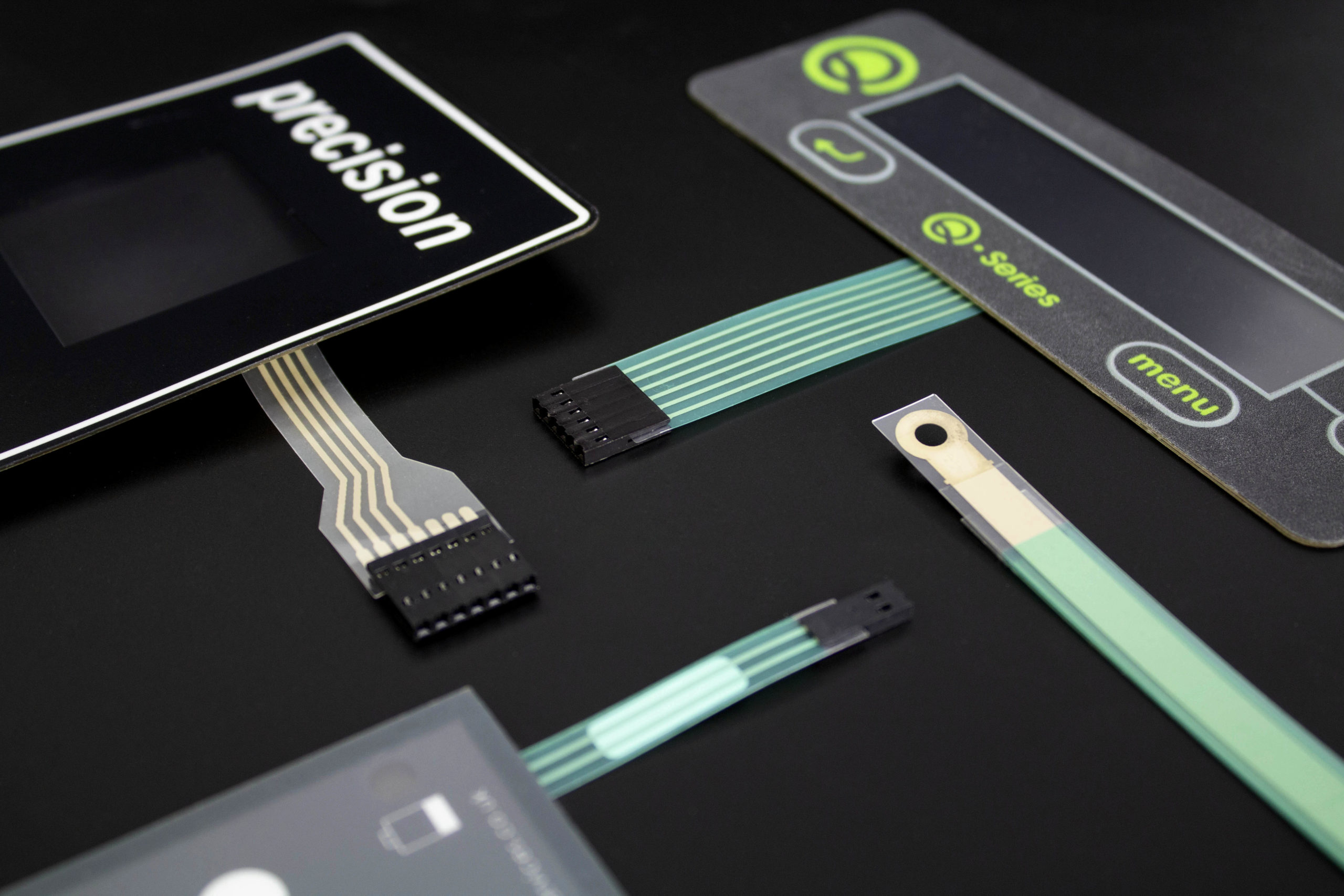The Manufacturing Refine Behind Membrane Switch: What You Need to Know
The production process behind membrane switches over combines cautious style, material selection, and quality assurance. It begins with understanding the ins and outs of membrane layer button layout and advances via different phases, including material choices and printing techniques. Each stage plays an important role in ensuring capability and resilience. The complexities of layer building and construction and the extensive screening criteria may reveal insights that are not right away evident. What exists beyond these foundational components?
Understanding Membrane Layer Switch Layout
Although membrane switches may show up easy initially look, their layout entails elaborate considerations that guarantee functionality and resilience. The style process begins with a thorough understanding of individual requirements, including the interface's desired application and environmental aspects. Comfort designs is a crucial element, as the layout needs to promote convenience of usage while making certain that responsive responses satisfies individual expectations.Moreover, the layering of elements, such as visuals overlays, sticky layers, and conductive traces, must be precisely engineered. membrane switch. This layered setup not just affects the button's responsiveness however also affects its longevity. Focus is offered to the sealing methods used to safeguard versus dampness and dust, which could endanger performance. In addition, layout considerations encompass aesthetic appeals, where shade systems and visual clearness enhance customer experience. Inevitably, the style of membrane layer switches equilibriums performance, customer experience, and durability, making sure that they satisfy the demands of various applications successfully
Materials Utilized in Membrane Switch Over Manufacturing
When picking products for membrane layer switch production, it is vital to contemplate both performance and durability. The primary materials consist of polyester and polycarbonate movies, which supply versatility and toughness. These films are commonly coated with glue to assure correct bonding to substrates. Conductive inks, generally made up of silver or carbon, are critical for producing electrical connections within the switch, permitting trusted operation.Additionally, a safety layer, such as a tough coat, is often related to enhance scratch resistance and long life. The choice of backing material, such as acrylic or foam, can substantially affect the switch's tactile feeling and overall user experience. In addition, various ecological aspects, including temperature and moisture, need to assist product option to assure peak efficiency in particular applications. Inevitably, the right mix of products adds to the membrane button's functionality and life expectancy, making educated selections necessary for suppliers.
The Printing Refine: Creating Video and Text
The printing process in membrane button manufacturing plays a substantial role in creating premium graphics and text. Numerous visuals style methods are employed to guarantee aesthetic allure and performance, while mindful ink choice methods are essential for resilience and performance. Comprehending these aspects is basic for accomplishing finest outcomes in membrane layer button design.
Graphic Design Techniques
Graphic style techniques play a crucial function in the printing procedure of membrane switches, as they specify how graphics and text will inevitably show up on the final item. Efficient visuals style entails the tactical usage of typefaces, designs, and shades to enhance readability and aesthetic appeal. Developers commonly make use of vector graphics for scalability, guaranteeing that photos remain sharp at various sizes. Additionally, interest to contrast and positioning is essential, as it influences user interaction and visual top quality. The incorporation of branding components, such as logo designs, should be taken care of with treatment to preserve brand name stability. Overall, thoughtful graphic design techniques contribute substantially to the capability and appearance of membrane layer switches, affecting customer experience and item performance.
Ink Choice Approaches
Selecting the appropriate ink is necessary for accomplishing the preferred aesthetic quality and toughness in membrane button production. Different ink types are utilized, including solvent-based, water-based, and UV-curable inks. Each type uses unique characteristics, such as versatility, resistance, and adhesion to ecological factors. Solvent-based inks are commonly favored for their longevity and lively shades, while water-based inks are more environmentally friendly however may have constraints in adhesion. UV-curable inks offer rapid healing and durable efficiency. In addition, shade matching methods ensure that the chosen inks align with design specifications. Inevitably, the choice of ink have to think about factors such as application technique, substratum compatibility, and end-use demands to accomplish remarkable cause membrane layer switch graphics and text.
Layer Building and Setting Up

Product Choice Process
A cautious option of products is crucial in the production procedure of membrane buttons, as it straight influences capability and resilience. The main products made use of include polyester, polycarbonate, and numerous conductive inks. Polyester is frequently favored for its outstanding resistance to chemicals and abrasion, making it ideal for harsh atmospheres. Polycarbonate, on the various other hand, gives remarkable quality and effect resistance, which is helpful for applications needing visibility and toughness. Conductive inks, normally composed of silver or carbon, are important for producing dependable electric pathways. In addition, the selection of sticky materials influences the general integrity of the switch - membrane switch. Reviewing factors such as environmental direct exposure, responsive feedback, and visual requirements resource guides producers in choosing the best materials for their details applications
Layer Adhesion Strategies
Sticking layers in membrane layer switch building is an important process that assures performance and longevity. Various adhesion methods are used to secure perfect bonding in between layers, which usually consist of making use of adhesives, heat, and pressure. Pressure-sensitive adhesives (PSAs) are commonly utilized for their convenience of application and instant bonding capabilities. In addition, thermal bonding methods can be used, where warm is used to trigger adhesive buildings, securing a solid bond. The selection of attachment approach mainly relies on the materials included and the particular application requirements of the membrane layer switch. Correct placement and consistent application of adhesives are important to stop issues, protecting the button runs effectively throughout its desired life expectancy.
High Quality Control Actions
Assuring quality control throughout the layer building and construction and assembly of membrane switches is important for maintaining efficiency and dependability. This procedure commonly includes several important procedures, consisting of complete assessments at each phase of manufacturing. Manufacturers make use of innovative testing techniques, such as peel examinations and bond analyses, to verify the honesty of layer bonds. In addition, visual assessments are performed to recognize any issues in printing or material visit this site right here variances. Environmental conditions, such as temperature level and moisture, are thoroughly kept an eye on to assure optimal healing and attachment. Furthermore, routine calibration of devices helps keep accurate production standards. By executing these quality assurance actions, suppliers can substantially reduce the danger of item failing, assuring that the last membrane layer switches over meet the called for requirements and client expectations.
Testing and Top Quality Control Measures

Advancements in Membrane Layer Change Innovation
As improvements in innovation remain to progress, membrane layer switches are gaining from ingenious advancements that improve their performance and user experience. One remarkable technology is the combination of capacitive touch innovation, which enables even more responsive and instinctive interface. This change not only boosts looks yet additionally minimizes mechanical damage, extending the life-span of the switches.Additionally, improvements in visuals overlay products have caused boosted resilience and resistance to environmental variables original site such as dampness and UV light. These materials currently use improved quality and brightness, additional boosting the aesthetic appeal.Furthermore, the incorporation of clever innovation is transforming membrane layer switches over into interactive control panels, enabling connectivity with IoT tools. This connectivity cultivates a smooth user experience, leading the method for applications in numerous industries, from health care to consumer electronic devices. Jointly, these developments setting membrane layer changes as critical components in contemporary gadget style.
Regularly Asked Questions
For how long Does the Membrane Switch Over Production Process Take?
The period of the membrane layer button production procedure can differ significantly. Factors such as complexity, materials used, and manufacturing quantity influence timelines, with normal manufacturing varying from a couple of days to a number of weeks for completion.
What Are the Typical Applications for Membrane Layer Buttons?
Membrane layer buttons are generally used in various sectors, consisting of auto controls, home home appliances, clinical gadgets, and consumer electronics (membrane switch). Their adaptability and durability make them suitable for applications needing user-friendly user interfaces and dependable efficiency in varied atmospheres
Can Membrane Switches Be Customized for Certain Demands?

What Is the Life-span of a Typical Membrane Layer Switch Over?
The life expectancy of a common membrane button varies, but normally, it varies from 1 to 5 million cycles. Aspects such as use, setting, and worldly high quality significantly affect resilience and total efficiency in time.

Are Membrane Layer Switches Over Ecologically Pleasant?
The ecological friendliness of membrane switches differs. Some materials made use of may not be recyclable, while others can be green. The general effect depends upon making methods and products, necessitating cautious consideration during selection and disposal. The manufacturing procedure behind membrane layer switches over combines careful style, material selection, and top quality control. It begins with comprehending the details of membrane layer switch design and proceeds via numerous stages, including material options and printing strategies. When picking products for membrane switch production, it is vital to ponder both performance and toughness. A mindful choice of materials is vital in the production process of membrane layer buttons, as it straight influences functionality and toughness. The choice of adhesion approach mostly depends on the materials included and the specific application needs of the membrane switch.